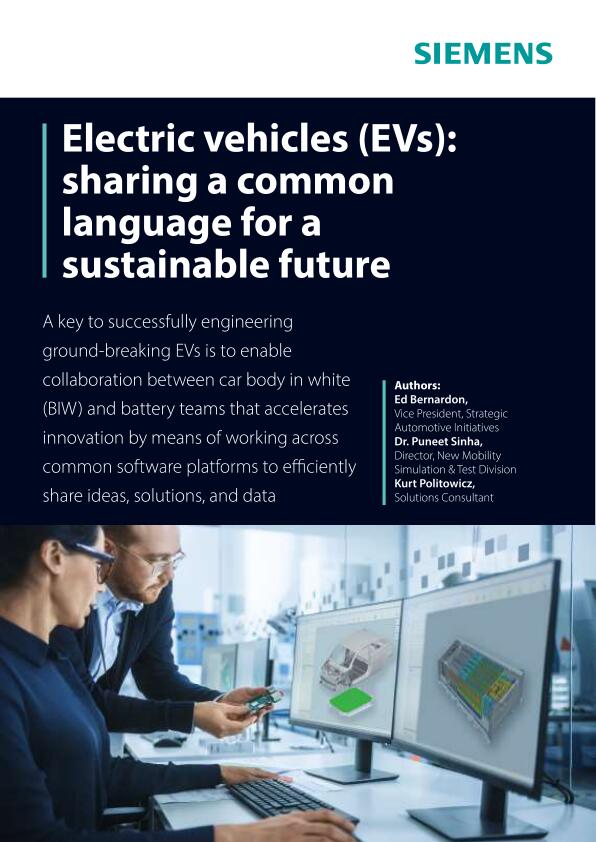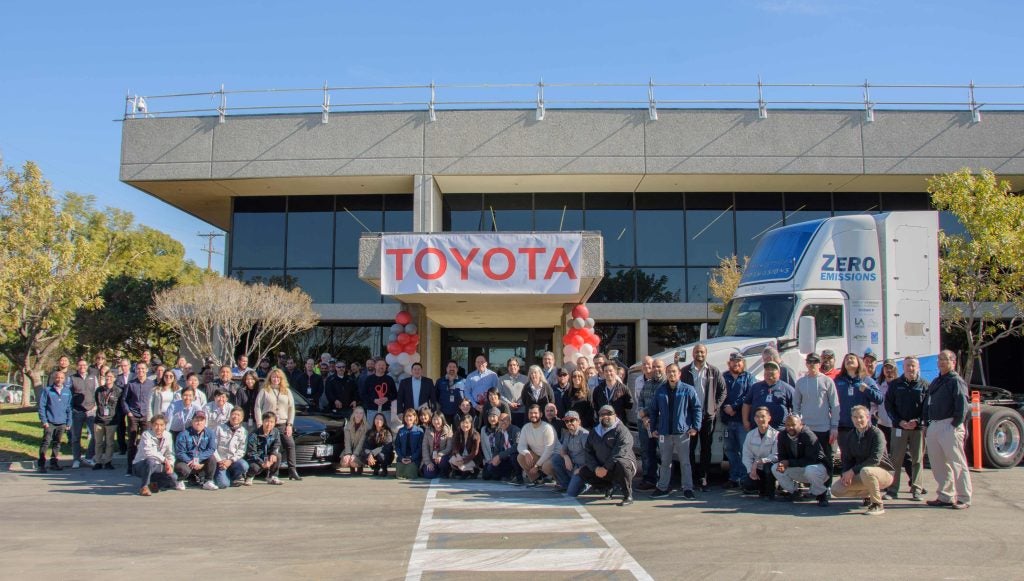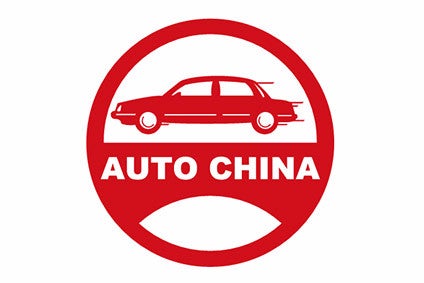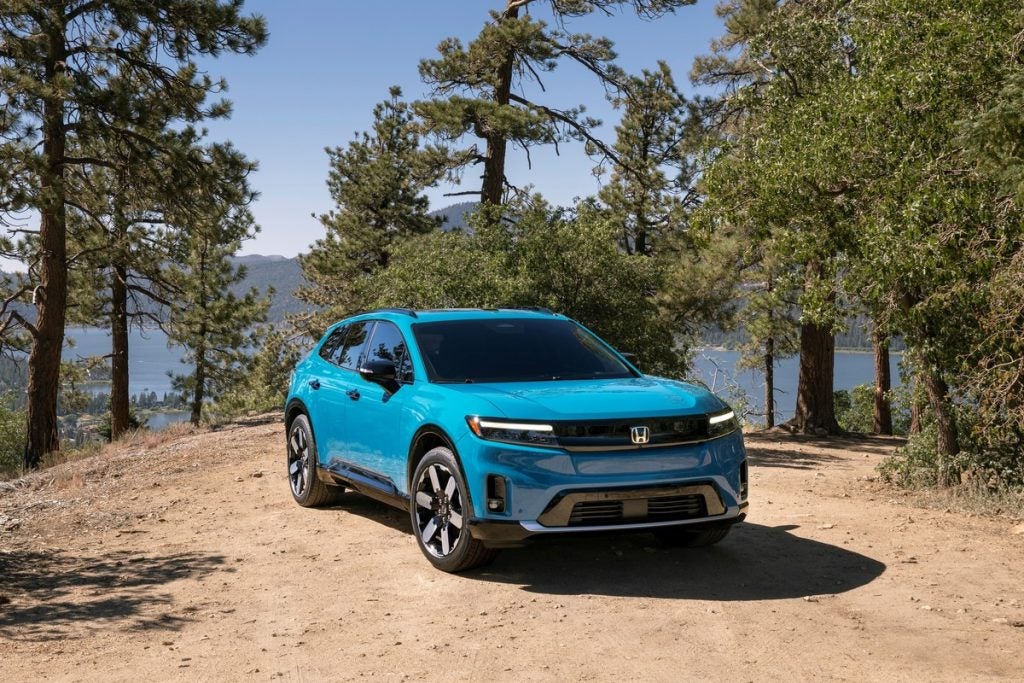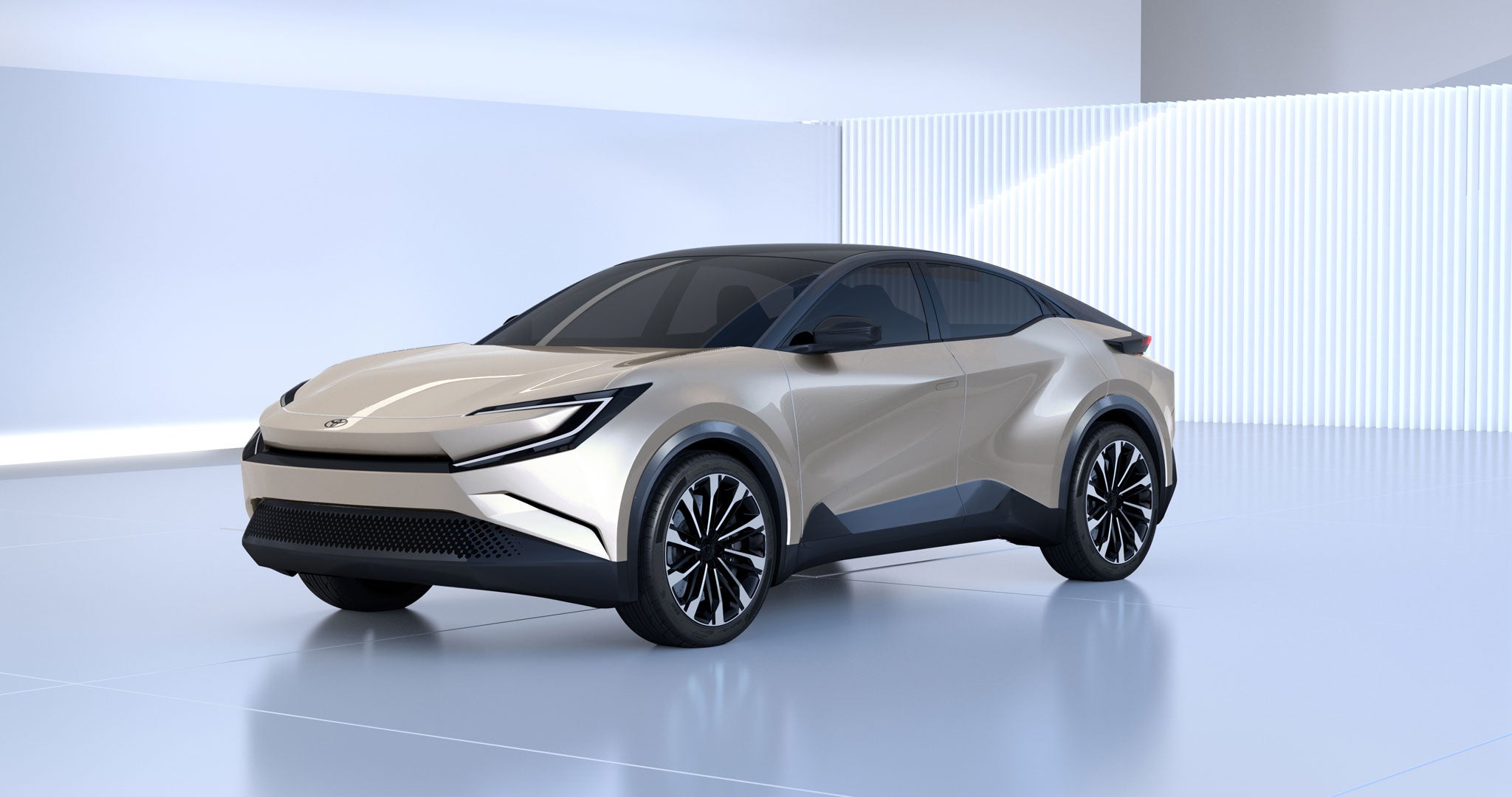
IC engine crossovers & SUVs
As makes such as Peugeot, Citroen, Opel-Vauxhall and Ford exit the region’s A segment, so Toyota Motor Europe benefits.
The Aygo X (Aygo Cross), TME’s smallest vehicle, was revealed in November 2021. The 3,700 mm long five-door crossover has lots of black and grey exterior detailing and can be specified with a full-length canvas roof.
All variants are powered by Toyota’s 1KR-FE engine, which has three cylinders and a capacity of 998 cc. A five-speed manual gearbox is standard and a CVT optional. There is neither turbocharging nor any form of electrification.
How well do you really know your competitors?
Access the most comprehensive Company Profiles on the market, powered by GlobalData. Save hours of research. Gain competitive edge.

Thank you!
Your download email will arrive shortly
Not ready to buy yet? Download a free sample
We are confident about the unique quality of our Company Profiles. However, we want you to make the most beneficial decision for your business, so we offer a free sample that you can download by submitting the below form
By GlobalDataProduction of this GA-B platform model commenced towards the end of Q1. The mid-life facelift probably won’t happen until the end of 2026 and the life cycle should be nine years.
As part of a wider collaboration, Suzuki and Toyota stated in March 2019 that Vitara Brezza production by Toyota Kirloskar Motor Pvt. Ltd. would commence from 2022. TKM is the manufacturing and distribution JV under which Toyota operates in the Indian market.
What had hitherto been known by its D22 codename was announced as the Urban Cruiser Hyryder in July.
This 4,365 mm long SUV is available as a mild hybrid, powered by a 76 kW (103 PS) and 137 Nm Suzuki 1.5-litre engine or as a hybrid. The latter uses a Toyota powertrain. This consists of a 68 kW (92 PS) and 122 Nm 1.5-litre engine and a motor which produces 58 kW (79 PS) and 141 Nm. Combined power for the hybrid is 85 kW (115 PS). While the HEV is front-wheel drive, all-wheel drive is available for the mild hybrid.
Maruti Suzuki’s twin is the Grand Vitara. Build of both should endure until 2029 with a facelift in 2026.
The brand’s biggest selling SUV globally is of course the RAV4. As the fifth generation had its mid-cycle facelift in 2021, the lead plant will commence production of generation six in 2024. Certain other sites will however build the model first launched in late 2018 until perhaps the end of 2024.
In North America, the next RAV should debut for the 2025 model year.
The Japanese market’s next Crown was revealed at a presentation in Japan two months ago. Toyota didn’t state when this sedan would become available or indeed, any details about it.
In fact, pre-production examples of four different Crown models were shown at the event: a 4,930 mm long Crown crossover sedan, a Crown crossover (which was labelled an ‘Estate type’), a Crown SUV (‘Sport type’) and the future Crown sedan. As the outgoing model was only launched in mid-2018, the successor might not arrive in production form until 2024 but 2023 is certainly possible.
Arguably the most important of the four is the crossover sedan. That’s because it was simultaneously revealed by Toyota Motor Sales USA and Toyota Canada as a new vehicle for the 2023 model year. In those markets, the Crown effectively replaces the Avalon. Although it has a sloping boot/trunk, the rear window is fixed.
In North America, where a car called Crown has not been available for 50 years, there are three model grades – XLE, Limited and Platinum- plus two powertrain choices, each of which is a hybrid, with all-wheel drive standard.
Toyota has not yet stated when the Crown (crossover sedan) becomes available in any market but Q4 for Japan and North America seems likely. Production for the home market at least, is at two domestic plants: Motomachi and Tsutsumi.
Looking at two large body-on-frame models, the sixth generation 4Runner is likely to be revealed in 2024. This will probably be at the State Fair of Texas, production commencing soon after. As per the current one, the 2025 model year 4Runner will share much with the Tundra pick-up.
Insiders have stated that a hybrid biturbo V6 will be standard. GA-F, TMC’s latest body-on-frame chassis, is said to be the basis of this forthcoming SUV.
Production of a new Sequoia , an even bigger RWD/4WD separate chassis SUV, started recently. Among the major changes is the replacement of the former 5.7-litre V8 by a turbocharged 3.5-litre hybrid V6. Toyota calls this 3,445 cc engine i-Force Max.
The hybrid powertrain has combined outputs of 437 hp and 583 lb ft and there is a ten-speed automatic transmission. A 36 kW (48 hp) and 250 Nm (184 lb-ft) motor is positioned between the engine and gearbox, while the nickel-metal hydride battery has a capacity of 1.87 kWh.
As for production, this takes place in Texas, the San Antonio plant having lost build of the Tacoma to make way for the Sequoia.
The life cycle should be a decade, a facelift being expected for the ’28 model year.
Electric crossovers & SUVs
Toyota Motor Corporation revealed an array of electric Toyota and Lexus prototypes and concepts plus the then soon to be launched Toyota bZ4X at a special event in December 2021. Among them was the boxy and retro ‘Compact Cruiser EV’.
Made even more eye catching by light blue paint and an orange slash on each D pillar, the concept is reportedly headed for production within the next three years.
This might be the 4.2 m long SUV which Toyota and Suzuki are co-developing. The latter company’s model is codenamed YY8.
Several other B/C segment models were also uncovered at last year’s showcase. Not much is yet known about the ‘Small SU EV’, a bZ small crossover for Japan and Europe or a ‘bZ Compact SUV’. One of these – potentially wearing a bZ2 badge – will probably replace the C-HR. While that might seem like an illogical move which would upset dealers in the US and Canada, the C-HR has not been too successful in North America. So a replacement, particularly if it’s electric, would be better suited to other regions.
Two other models previewed at the December 2021 event were a larger ‘Crossover EV‘ plus the lengthier ‘bZ Large SUV‘. Each should be introduced in 2024 or 2025.
What has become the bZ vehicles project was first publicised by Toyota and its partner Subaru in June 2019. Back then, they each announced the development of a dedicated architecture for battery-electric vehicles. This platform would initially be for models in the C, D, and E segments.
The first models from the JV are all-wheel drive crossovers for the Subaru and Toyota brands. The project has since been expanded to include Hino, Daihatsu, Lexus, Suzuki, Mazda and Denso and for vehicles in many segments.
Toyota revealed clay mock-ups of six proposed EVs at a presentation called Aiming to Popularize BEVs on 7 June 2019. The half dozen were a large SUV, a medium SUV, a medium crossover, a medium minivan, a medium sedan and a compact.
The letters b and Z (‘Beyond Zero’) plus a number and an X for all-wheel drive applications is how Toyota names its new generation of EVs.
So far, we’ve seen only the bZ4X in production form. This e-crossover was previewed by a concept of the same name revealed at the Shanghai motor show in April 2021. The company also stated that production would take place in both Japan and China. In the latter market, FAW Toyota has the bZ4X but GAC Toyota will also have a model which is very similar. That vehicle’s name is yet to be disclosed.
The 4,690 mm long bZ4X was first officially detailed in October 2021. It is around the same size as the RAV4, has a 71.4 kWh battery and a steer-by-wire system which can include a wing-shaped steering wheel in some cars which needs only to be turned through 150 degrees lock-to-lock. Mechanical steering is also available.
The single motor of front-wheel drive variants produces 150 kW, 0-100 km/h takes 8.4 seconds and the maximum WLTP range is 499 km (310 miles). AWD versions have an 80 kW motor on each axle, 0-100 km/h takes 7.7 seconds and WLTP range is 459 km (285 miles). The minimum weight is 1,920 kg.
CATL is the battery supplier for bZ4Xs built in China but for cars made in Japan (Motomachi in Toyota City), there are two suppliers: CATL and Prime Planet Energy & Solutions. The latter is a Panasonic and Toyota JV. The Japanese market sales launch commenced in May.
Subaru’s equivalent of the bZ4X is the Solterra. Their life cycles will surely also be twinned, meaning each should have some restyling touches in 2026, potential successors appearing in 2029.
This was the second of two features about certain Toyota brand future vehicles, the first one having concerned cars, MPVs and pick-ups. The subjects of the next and final two reports, rounding out a series on Toyota Motor brands and subsidiaries, will be Perodua and Daihatsu, followed by Lexus.

